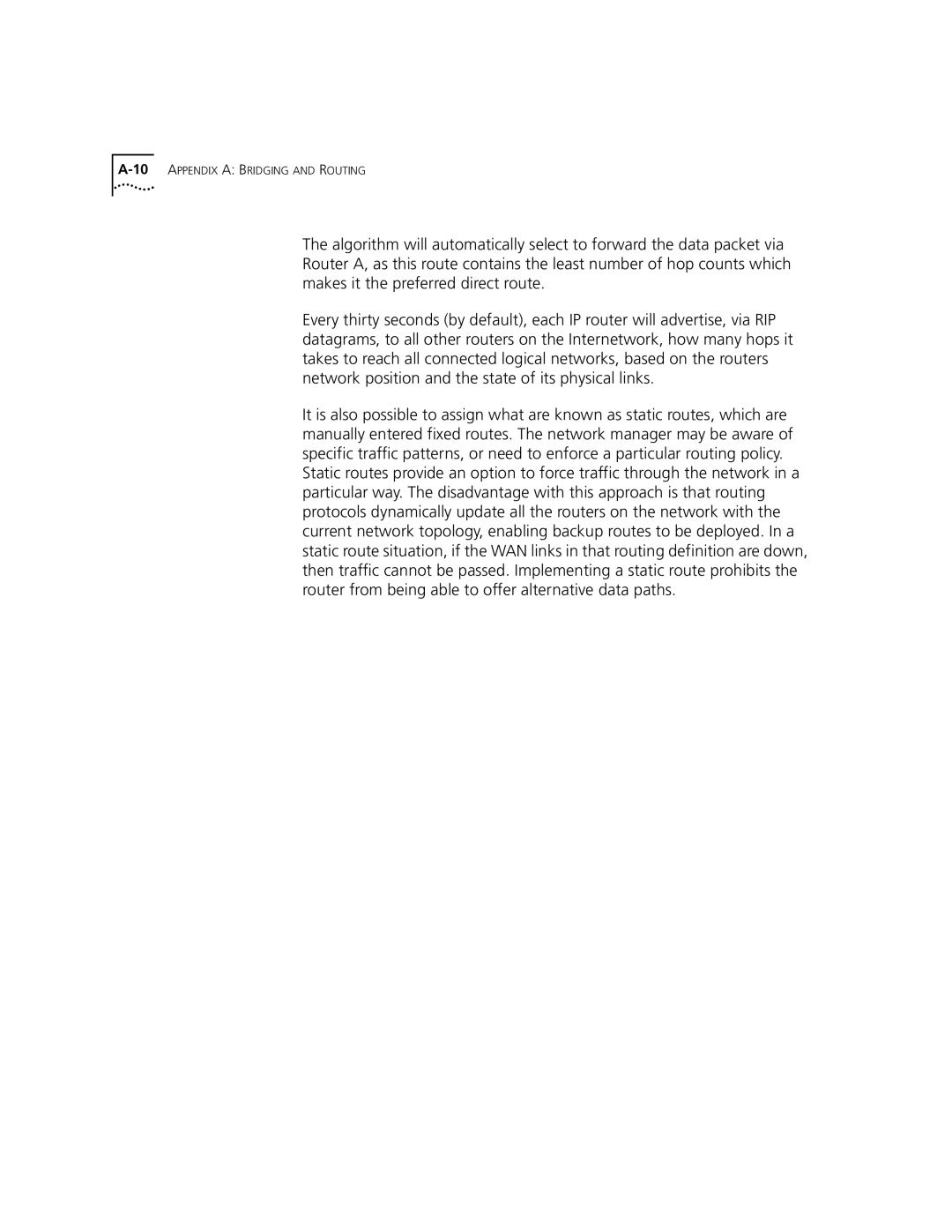A-10 APPENDIX A: BRIDGING AND ROUTING
The algorithm will automatically select to forward the data packet via Router A, as this route contains the least number of hop counts which makes it the preferred direct route.
Every thirty seconds (by default), each IP router will advertise, via RIP datagrams, to all other routers on the Internetwork, how many hops it takes to reach all connected logical networks, based on the routers network position and the state of its physical links.
It is also possible to assign what are known as static routes, which are manually entered fixed routes. The network manager may be aware of specific traffic patterns, or need to enforce a particular routing policy.
Static routes provide an option to force traffic through the network in a particular way. The disadvantage with this approach is that routing protocols dynamically update all the routers on the network with the current network topology, enabling backup routes to be deployed. In a static route situation, if the WAN links in that routing definition are down, then traffic cannot be passed. Implementing a static route prohibits the router from being able to offer alternative data paths.
